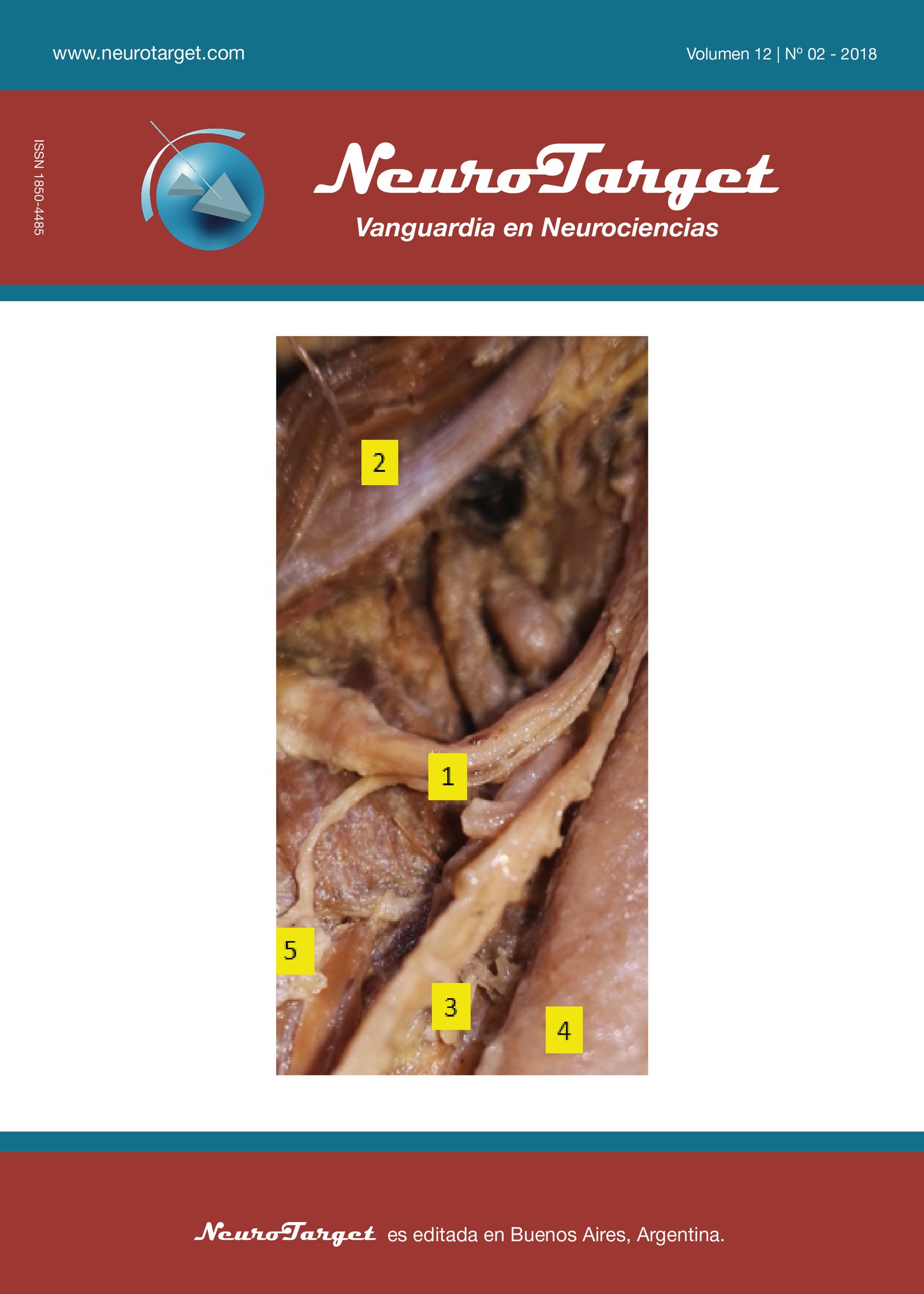Post-operative chronic pain. Is there anything new?
DOI:
https://doi.org/10.47924/neurotarget2018126Keywords:
Post-operative chronic painAbstract
Post-operative chronic pain is an entity in itself which significantly affects the life of patients who present it and meet certain well-defined diagnostic criteria.
It is considered a complication to the surgical procedure, and its in-cidence varies between 15% - 60%, according to the type of surgery performed, impacting/influencing severely on the biopsychosocial sphere and favouring the development of comorbidities.
The pharmacological approach contemplates an important number of specific drugs that do not always manage to mitigate adequately the pain condition.
Additionally, there are invasive strategies such as the use of blocks, radiofrequency procedures, peripheral nerve stimulation techniques or posterior cords, among others.
Taking into account the loss of effectiveness of different conservative treatments and as time elapses since the beginning of the condition/ symptoms, it is important to consider the interventional alternatives in a timely manner, knowing the capacity that this entity can generate in the patient.
Metrics
References
Lavand’homme P, Pogatzki-Zahn, E. Dolor Crónico Postquirúrgico: Definición, Impacto, y Prevención. Año mundial contra el dolor crónico postoperatorio: Hoja de datos. IASP 2017: 4; 1-6.
Macrae WA. Chronic post-surgical pain: 10 years on. Br J Anaesth.2008; 101: 77-86.
Werner MU, Kongsgaard UE. I. Defining persistent post-surgicalpain: is an update required? Br J Anaesth. 2014; 113: 1-6.
Covarrubias-Gómez A, Templos-Esteban LA, Castro-Garcés L. Ponce-Uscanga E. ECO-AADAP: Dolor crónico postoperatorio. Rev. Mex. Anest. 2017; 40 (S1): S325-S329.
Corell D. Chronic postoperative pain: recent findings in understanding and management. F1000Research. 2017; 6: 1054-1065.
Wylde V, Dennis J, Beswick AD, Bruce J, Eccleston C, Howells N,Peters TJ, Gooberman-Hill R.Systematic review of managementof chronic pain after surgery. BJS 2017; 104: 1293-1306.
Tawfic Q, Kumar K, Pirani Z, Armstrong K. Prevention of chronicpost-surgical pain: the importance of early identification of riskfactors. J Anesth. 2017; 31: 424-431.
Pozek JP, Beausang D, Baratta JL, Viscusi ER. The acute tochronic pain transition, can chronic pain be prevented? Med Clin N Am. 2016; 100: 17-30.
Vergne-Salle P. Management of neuropathic pain after kneesurgery. Joint Bone Spine. 2016; 83: 657-663.
Elahi F, Reddy C, Ho D. Ultrasound guided peripheral nervestimulation implant for management of intractable pain afteringuinal herniorraphy. Pain physician. 2015; 18: E31-8.
Thapa D, Ahuja V, Verma P, Das C. Successful management of a refractory case of postoperative herniorrhaphy pain with extended duration pulsed radiofrequency. Saudi J Anaesth. 2016; 10: 107-109.
Forero M, Rajarathinam M, Adhikary S, Chin KJ. Erector spinaeplane (ESP) block in the management of post thoracotomy pain syndrome: a case series. Scand J Pain. 2017; 17: 325-329.
Aiyer R, Barkin RL, Bhatia A, Gungor S. A systematic review onthe treatment of phantom limb pain with spinal cord stimulation.Pain Manag. 2017; 7: 59-69.
Shamji MF, De Vos C, Sharan A. The Advancing Role of Neuromodulation for the Management of Chronic Treatment-Refractory Pain. Neurosurgery. 2017; 80: S108-S113.
Liem L, Mekhail N. Management of Postherniorrhaphy ChronicNeuropathic Groin Pain: A Role for Dorsal Root Ganglion Stimulation. Pain Pract. 2016; 16: 915-923.
Downloads
Published
How to Cite
Issue
Section
License
Copyright (c) 2018 Alfredo Covarrubias-Gómez, Rodrigo A. Pavón-Sánchez, Orlando Carrillo-Torres

This work is licensed under a Creative Commons Attribution 4.0 International License.
The article is distributed under the Creative Commons Attribution 4.0 License. Unless otherwise stated, associated published material is distributed under the same licence.







